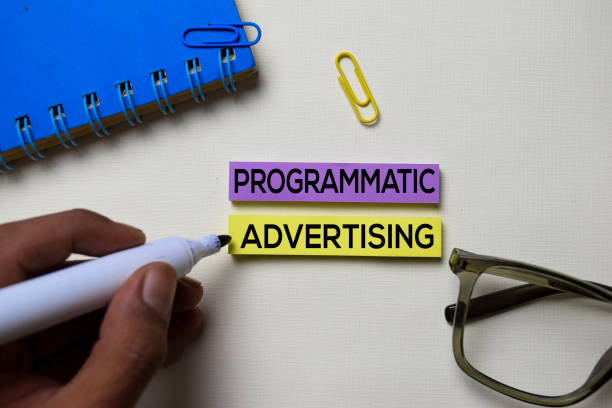
Programmatic advertising has revolutionized how businesses reach their target audiences, making ad buying faster, more efficient, and data-driven. As technology advances, the future of programmatic advertising promises even more groundbreaking changes.
In this article, we’ll explore what lies ahead for this ever-evolving space and how businesses can prepare for the future.
What is Programmatic Advertising?
Programmatic advertising is the automated buying and selling of online ads using software. Unlike traditional methods, programmatic leverages artificial intelligence (AI) and real-time bidding (RTB) to optimize ad placements. This ensures ads are delivered to the right people at the right time, maximizing ROI.
The Current State of Programmatic Advertising
Today, programmatic advertising dominates the digital ad space, accounting for over 85% of all digital display ads. Key features of the current landscape include:
- Real-Time Bidding (RTB): Ads are bought and sold in milliseconds.
- Personalization: Advanced data targeting delivers highly tailored ads.
- Omnichannel Reach: Programmatic ads extend across devices, from desktop to mobile to connected TVs.
- Cost Efficiency: Automation reduces manual work, cutting costs and time.
- Emerging Trends Shaping the Future of Programmatic Advertising
1. The Rise of Artificial Intelligence and Machine Learning
AI and machine learning are set to transform programmatic advertising further. These technologies can analyze massive datasets, predict user behavior, and optimize campaigns in real-time. Future advancements might include:
- Smarter audience segmentation.
- Predictive analytics for better campaign outcomes.
- Automated ad creatives tailored to individual preferences.
2. Privacy-First Advertising
With increasing concerns about data privacy, programmatic advertising must adapt to a world with stricter regulations, such as the General Data Protection Regulation (GDPR) and California Consumer Privacy Act (CCPA). Here’s what we can expect:
- Greater reliance on first-party data.
- Development of privacy-compliant tracking solutions like Google’s Privacy Sandbox.
- Increased use of contextual targeting over behavioral targeting.
3. The Death of Third-Party Cookies
Google’s planned phase-out of third-party cookies by 2024 has sent shockwaves through the advertising industry. Programmatic advertisers will need to shift focus to:
- First-Party Data: Collecting and utilizing data directly from users.
- Identity Solutions: Leveraging tools like Unified ID 2.0 and other secure identity frameworks.
- Cookieless Targeting: Using AI-driven alternatives to target audiences.
4. Connected TV (CTV) and Video Advertising
The rise of streaming platforms and on-demand video has made connected TV a crucial component of programmatic advertising. Future developments include:
- Enhanced targeting capabilities for CTV ads.
- Integration of interactive ad formats.
- Increased ad spend on video advertising, driven by growing viewer demand.
5. Programmatic in Emerging Markets
Programmatic adoption in emerging markets, particularly in Africa, is accelerating due to increasing internet penetration and smartphone usage. Companies like TechAfri are championing innovative solutions for businesses in these regions, enabling:
- Affordable access to programmatic platforms.
- Localized ad content tailored to cultural contexts.
- Growth in regional digital economies.
6. Blockchain in Programmatic Advertising
Blockchain technology holds potential to increase transparency and combat ad fraud in programmatic advertising. Its future applications include:
- Verifying ad impressions.
- Ensuring fair pricing through decentralized ad exchanges.
- Reducing discrepancies in reporting.
Challenges Ahead for Programmatic Advertising
1. Ad Fraud
Despite advances, ad fraud remains a significant challenge. Solutions like AI-driven fraud detection and blockchain will be crucial in tackling this issue.
2. Balancing Personalization and Privacy
Advertisers must strike a balance between delivering personalized ads and respecting user privacy. This will require innovative, ethical approaches to data usage.
3. Complexity of Tools and Platforms
As programmatic systems become more sophisticated, advertisers may face difficulties navigating complex tools. User-friendly platforms and education will play key roles in overcoming this challenge.
How Businesses Can Prepare for the Future of Programmatic Advertising
- 1. Invest in First-Party Data: Build robust systems to collect and analyze data directly from customers.
- 2. Adopt AI-Powered Tools: Leverage AI to optimize ad targeting and creative design.
- 3. Stay Updated on Regulations: Ensure compliance with global and regional privacy laws.
- 4. Experiment with New Channels: Explore CTV, audio, and interactive formats for maximum reach.
- 5. Collaborate with Tech Partners: Partner with platforms like TechAfri for localized programmatic solutions.
Conclusion: Embracing the Future
The future of programmatic advertising is full of possibilities, from AI-driven optimizations to privacy-compliant targeting strategies. By staying informed and embracing innovation, businesses can remain competitive and thrive in this dynamic landscape.
Ready to dive deeper? Check out our next article on “How to Launch a Successful Tech Startup” for more insights into the cutting-edge trends shaping the industry. Visit TechAfri for more expert insights and resources!

